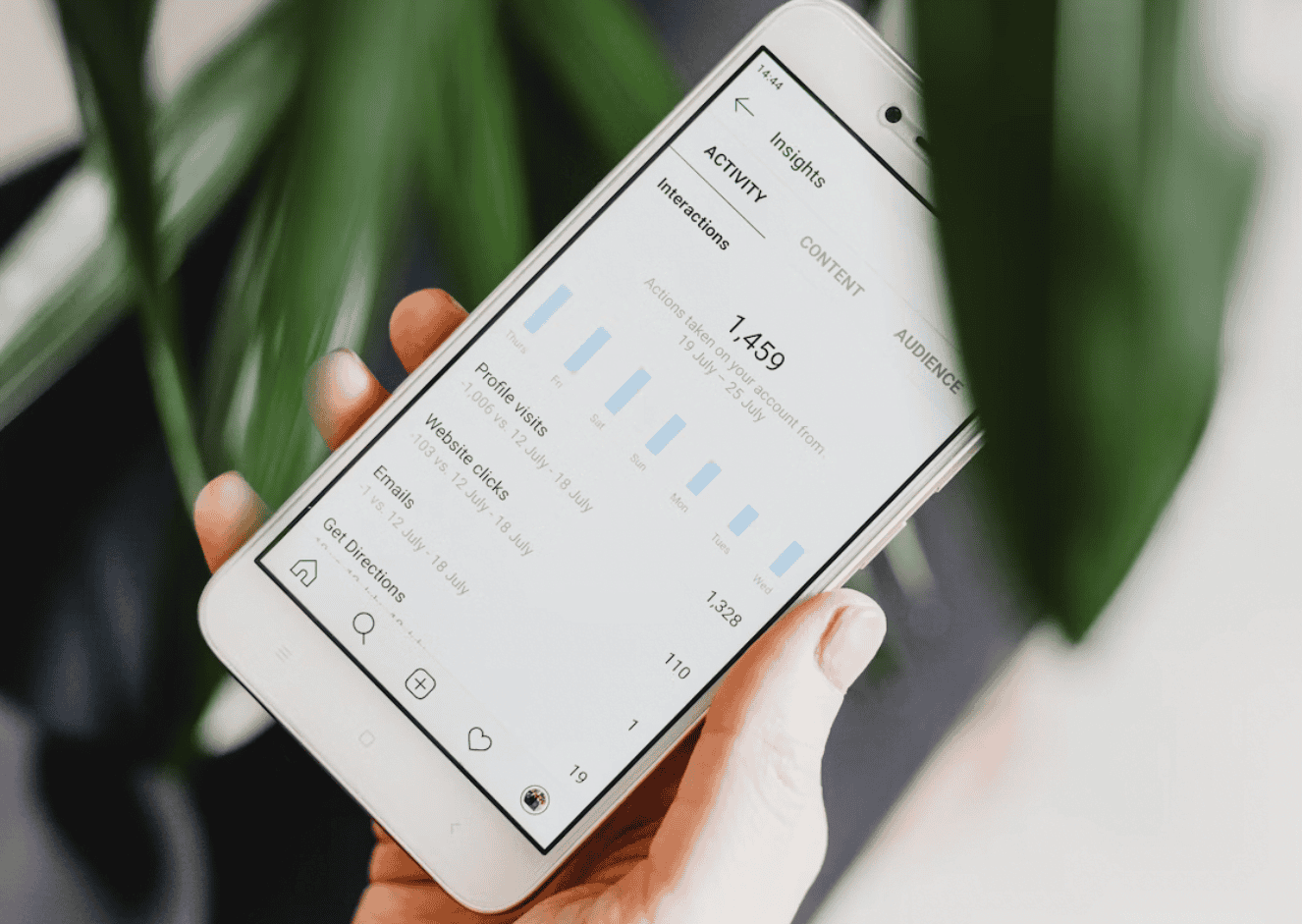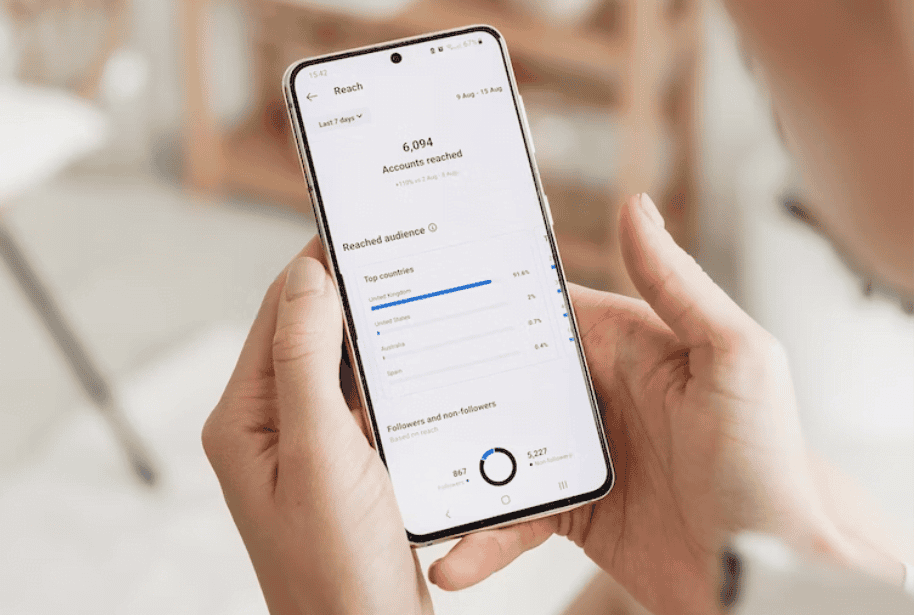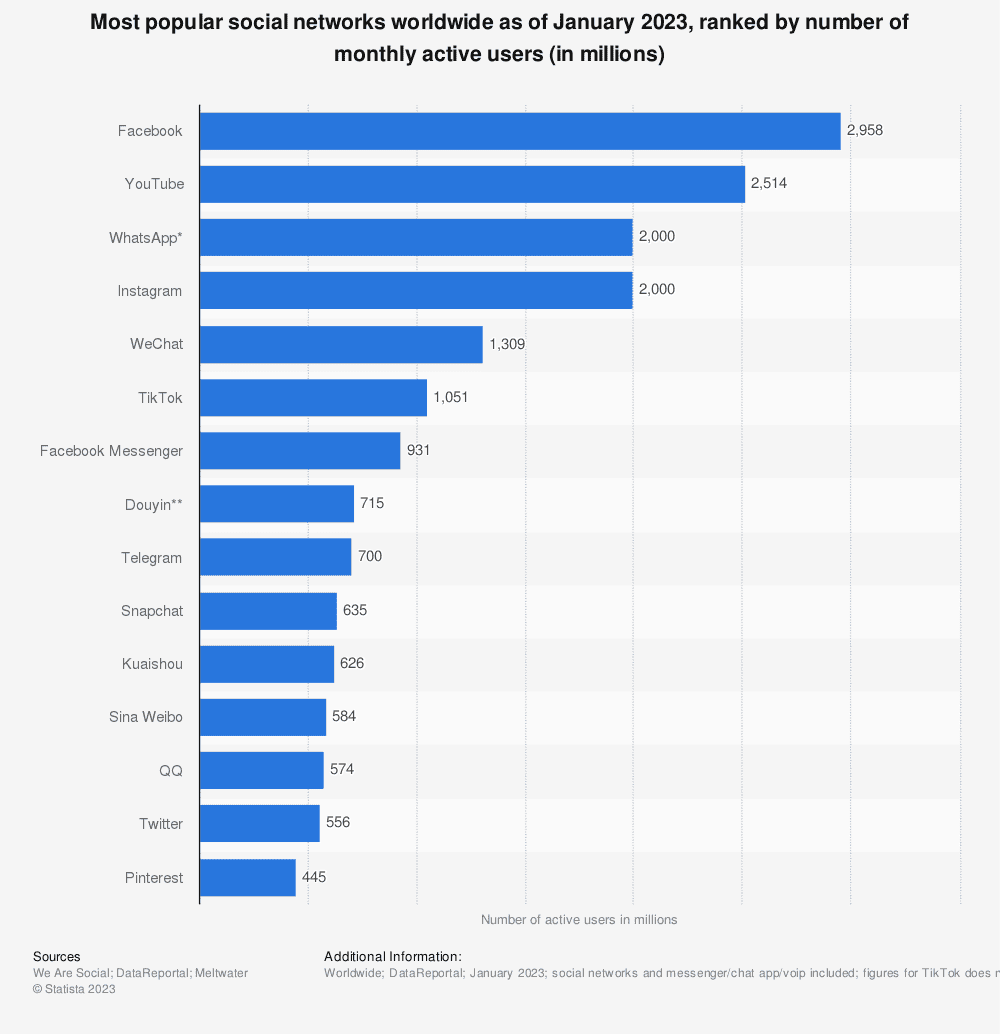Social media is one of the most powerful tools in a marketing professional’s arsenal. Almost $210 billion will be spent this year on social media advertising, reaching almost the entire global population on one platform or another.
To leverage social media for your business, you need to ensure your posts reach your audience. Although paid ads and sponsored posts will help you achieve this, you need to consider the social media algorithm.
What are social media algorithms (and how do they work)?
Social media algorithms are a method of ranking social media posts in terms of how they appear on a user’s feed.
The algorithm itself is a set of rules that measures a post’s relevance using factors like the following:
- Date and time of posting
- A user’s previous interaction with your account
- Content type, e.g., photos, videos, text posts
- Types and length of other interactions
Social media algorithms are the reason why a user won’t see every post from every account that they follow on their feed. For example, consider the last time that you used Instagram. What did your feed look like?

Free-to-use image sourced from Unsplash
Chances are that you follow more accounts than you can reasonably consume daily content from, including ads and sponsored content. To deliver a relevant experience for you and keep you returning to the platform, Instagram’s algorithm will prioritize showing you content from accounts that you interact with.
Why do social media algorithms exist?
So, why do social media algorithms exist? As we’ve said, the main reason is to deliver users a tailored experience with content that will keep them coming back and interacting with those accounts. They exist to create a user-focused experience.
Their other major (but related) purpose is to filter out irrelevant or spam content to ensure that users see the content they want.
Why are social media algorithms important?
It’s fairly clear to see why algorithms are important to users and platforms. They keep individual feeds tailored to personal tastes and remove irrelevant content that could lose a platform valuable users.
But why are social media algorithms important for content creators?
Understanding algorithms will help you get your content in front of relevant people and keep your audience coming back to your profile. By mastering the algorithm of your chosen social media platforms, you can consistently get your posts in front of your audience, garnering more engagement and a higher return on investment (ROI).
6 ways to master your social media algorithm
Social media algorithms can seem confusing and constantly changing. While this is true to an extent, here’s how to stay on top of the algorithm and get your quality content in front of your audience.
Analytics are your friend
The first thing that you need to understand is how to know if you are working with the algorithm or against it. Keeping a close eye on your analytics is the best way to know whether your content is getting consistent, genuine engagement that is driving more traffic to your business.

Free to use image sourced from Unsplash
When testing out some of the tips below, make sure to know what you’re looking for to measure return on investment. Some common benchmarkers include:
- Measuring growth in follower percentage for campaigns designed to raise brand awareness.
- Active engagement (likes, shares, and comments) for campaigns aiming to grow your community.
- Website visits and clicks when trying to drive traffic to your site.
All of these datasets are useful for any social media campaigns outside of the algorithm, but processing data from your campaigns is an ideal way to measure how well you are working with the algorithms.
Be sure to keep up to date with the latest data automation and ETL developments for more information on how to process this data effectively.
Choose the right platforms
There’s little point in mastering the algorithm for a platform your audience is not using. You should thoroughly research where audiences in your target demographics and sector exist online. From here, you can research specific algorithm rules that will help to increase your reach (more on this below).

Image sourced from Statista
For example, suppose you’re running a campaign for family law digital marketing. In that case, you’re likely looking at a professional audience in the 30+ age bracket, likely in the local area. For such a sector, you’re unlikely to choose TikTok over, for example, LinkedIn.
A/B test your content
Find social media algorithms confusing? Try A/B testing your content. Here’s how:
- Choose one factor that you’d like to test relating to the algorithm, e.g., post timings or content type.
- Produce two sets of content that vary only by that one factor, i.e., the same post at two different times or a post and a video on the same topic.
- Keeping all other factors the same, publish this content to your audience and measure engagement.
This should give you an idea of when to post your content and what content your audience prefers.
Keep up with current trends
Trends shift quickly on social media. Keeping up with popular trends, be it post format, sounds, or templates, can help you to keep your audience engaged. While this may seem relevant only to B2C and individuals, B2B can also benefit from this.
For example, say you’re a SaaS brand running a campaign for a digital phone number package. There is plenty of scope within every brand to produce video content with a trending sound—perhaps, in this case, as a mock phone number or behind a video on the benefits of a phone number for small business.
Remember searching exists on social media as well. The ways in which audiences search for content vary by time and platform, but you should still bear it in mind.
Get into a consistent posting habit
A large part of social media algorithms—and one of the ways in which they impact small businesses that might lack the time and financial resources—is the time and day of posting.
There are certain times a day, and these differ for each platform when audiences are most likely to view content. Accounts which post at these times are more likely to get their content shown promptly to audiences.
These times may include (more about this in the ‘platforms’ section):
- On LinkedIn, professionals may view posts during their lunch break (12-2 pm), at the start of the day (8-9 am), or at the end of the day (4-6 pm).
- On Instagram and Facebook, audiences may well view the most content around lunchtime or towards the evening (after 5 pm).
- TikTok users typically use the app throughout the day, with peaks in the morning and evening.
Whenever you decide to post, it should be consistent and based on reliable statistics for your content and chosen social media platforms.
Know your audience
Current trends and consistency will only get you so far if you’re producing content that your audience isn’t interested in. To find out what your audience is interested in, refer to the section on A/B testing.

Free to use image sourced from Unsplash
Alternatively, you can use other platforms, like email marketing and directly asking existing clients to find out what they’d like to see. You can even conduct an audit to find out the types of content that similar accounts are posting and what gets the most engagement. Try picking out 5-10 competitors or similar brands that get the sort of engagement that you’re targeting and identifying their most popular content.
It’s best to choose one metric and work on this. For example, say you’re interested in getting more Instagram followers. Follow your competitor accounts over a period of weeks or months and identify those which are growing rapidly. Find out what kinds of content might be driving this by auditing likes, shares, and spikes in follower numbers.
Then, get creating!
Invest in your team and your content
Finally, this is advice for all your social media estate. Invest in your team from the start, providing them with opportunities for training and sharing their ideas. This is a surefire way to build trust in your team, which, in turn, will build their skills and make them more confident in their content.
One of the ways in which many teams are investing in their people—especially in the world of remote and flexible working – is to provide a work phone. A digital phone number for work makes communication in the rapid-fire world of social media a breeze while allowing your team to keep their personal phones separate from work.
That being said, you should also invest in your content. This means you should create genuine, high-value content that your audience wants to see. Again, this comes back to investing in your team and providing them with the right skills and knowledge to create this winning content.
Social media algorithms and platforms
According to recent research, the average user visits seven different social media sites per month. With this in mind, it’s important for you to be reaching out to your audience across different platforms, with an understanding of which digital spaces your audience is occupying. You’ll need to understand the different algorithms for individual social media platforms.
Twitter has undergone a lot of change recently, leaving users puzzled as to how to get their content in front of audiences. There are now two ways to view content on this site. “Following” shows audiences a reverse-chronological series of Tweets.

Free-to-use image sourced from Unsplash
“For You” show audiences content based on what they have previously liked, posts getting lots of engagement, or posts dealing with trending topics. You need to stay ultra-relevant if you’re going to succeed on Twitter.
Although initially a platform solely for images, Instagram now has a more complex algorithm, particularly when using Instagram for business, which can be competitive.
Video content is generally prioritized over images, especially video content that employs trending sounds and templates. Accounts with high follower and engagement levels are also favored. Instagram’s algorithm, then, tends to value a combination of up-to-the-minute content and thought-provoking posts that prompt sharing and discussion.
Perhaps unfairly viewed as the serious cousin to other social media platforms, LinkedIn is invaluable for B2B marketing and sales. If you’re running ads for HR Portals, HR software, CRM tools, a hosted small business phone system, or a lovely new office development, this is the place.
Its professional user base means that audiences are already loosely arranged into segments—their industry and level of experience—so it’s vital that you make relevant content for your sector. In addition, LinkedIn has a high number of professional influencers whose job is to reach out to people on the platform. These people, and news specific to each industry and the business sector, tend to determine what is trending on LinkedIn, so be sure to keep up with the latest news and be ready to create thoughtful, debate-provoking content at short notice.
A polarising force in the world of digital marketing, Facebook is still a platform to be reckoned with as one of the originators of the social media algorithm as we now know it.

Image sourced from Statista
As with other platforms, Facebook users will typically see more posts from accounts they regularly interact with, as opposed to ones that they follow and then never like or share from. There is also a strong culture of advertisements and sponsored posts on Facebook, so it’s worth considering investing some of your budget here if you want to succeed on the platform long-term.
TikTok
The rising star of social media, TikTok has an extremely active user base and has catapulted individuals and brands to fame. Succeeding on this platform involves following trends and building up a niche fan base. There are many areas of TikTok with active fans that consume lots of related content. With the added potential of going viral, TikTok is a valuable tool for digital marketers with their fingers firmly on the pulse.
YouTube
YouTube is a video platform, so video content itself isn’t the only priority. The algorithm is focused more on video descriptions, tags, and the content itself, as well as follower numbers and engagement rates on individual videos. Shorts—like TikToks or Instagram Reels—with trending sounds and tags are also popular with the algorithm. It’s worth putting time and resources into your YouTube content, as quality, well-viewed content tends to do well.
Mastering your social media algorithm
Once you’ve cracked your social media algorithms, you should see a rise in engagement from your audience because your content is being shown to a wider section of your audience base. However, if you find that this isn’t the case, try finding out more about how to market your business on social media or how to create content that works for your audience. Above all, remember to prioritize consistency, research, and investing in your team.


